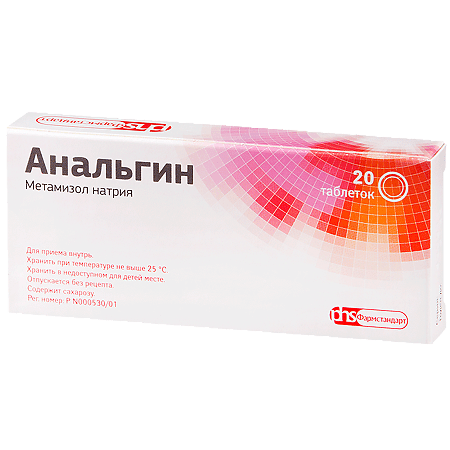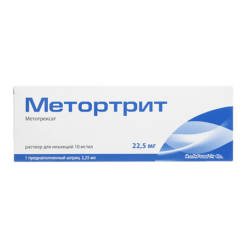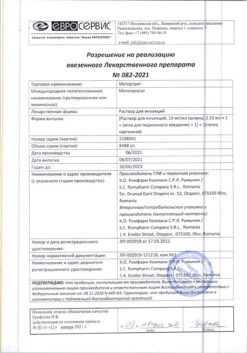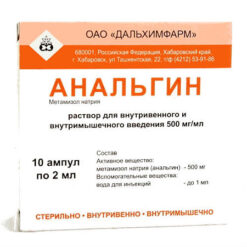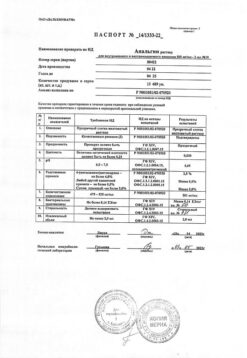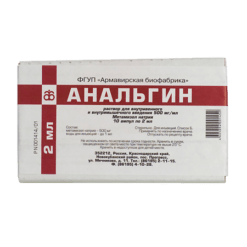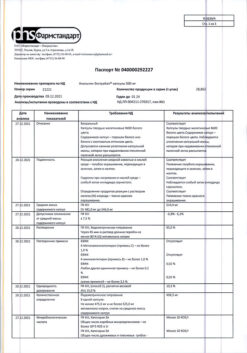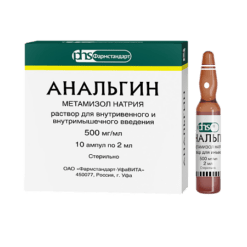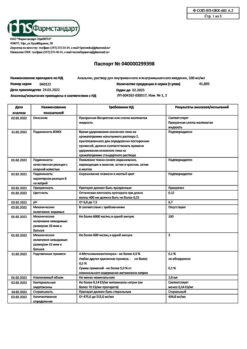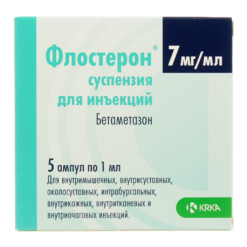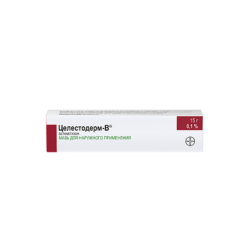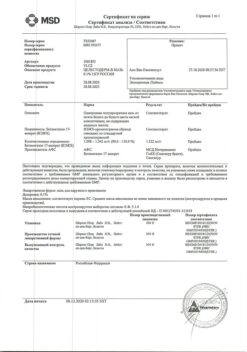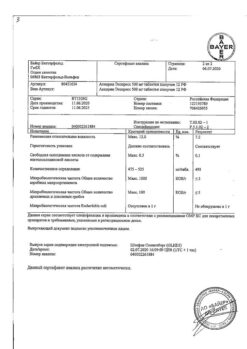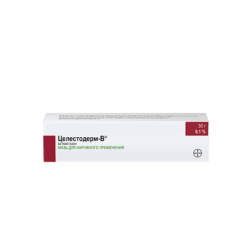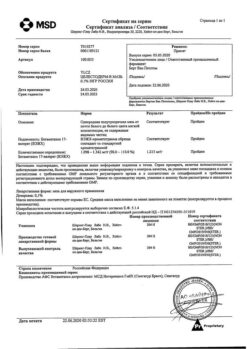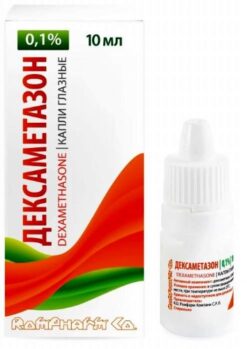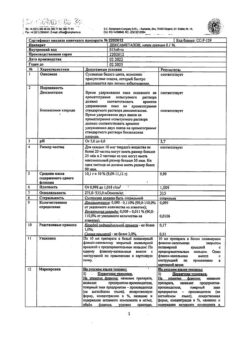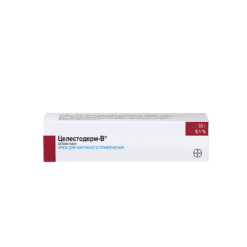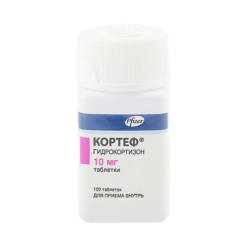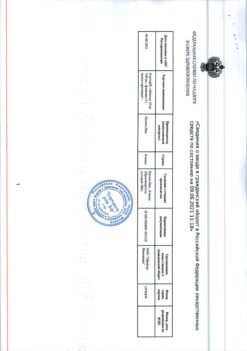No products in the cart.
Analgin, tablets 500 mg 20 pcs
€3.73 €3.32
Description
Inalgin non-selectively blocks cyclooxygenase and reduces the formation of prostaglandins from arachidonic acid, prevents the conduction of pain extra- and proprioceptive impulses.
Panalgin has a weak anti-inflammatory effect, resulting in little effect on water-salt metabolism (sodium and water retention) and the mucous membrane of the gastrointestinal tract.
It has antispasmodic effect on the smooth muscle of the urinary and biliary tracts. The action develops 20-40 minutes after oral administration.
Pharmacokinetics
It is well and quickly absorbed in the gastrointestinal tract, which provides rapid development of the clinical effect. When administered in therapeutic doses, it penetrates into the mother’s milk.
The maximum concentration in plasma is reached 1-1.5 hours after oral administration.
In the intestinal wall it is hydrolyzed with the formation of the active metabolite, 4-methyl-amino-antipyrine, which in turn is metabolized to 4-formyl-amino-antipyrine and other metabolites.
The level of binding of the active metabolite to proteins is 50-60%.
The excretion of metabolites passes through the kidneys. In addition, metabolites are excreted with breast milk.
Indications
Indications
Pain syndrome (mild to moderate severity): incl. headache, migraine, toothache, neuralgia, myalgia, radicular syndrome, algodismenorrhea; for renal, hepatic and biliary colic (in combination with antispasmodics),
to reduce pain after surgical and diagnostic interventions,
elevated body temperature with “colds” and other infectious and inflammatory diseases. The advisability of using the drug is decided in each case depending on the severity, nature and tolerance of the fever.
Pharmacological effect
Pharmacological effect
Analgin non-selectively blocks cyclooxygenase and reduces the formation of prostaglandins from arachidonic acid, and prevents the conduction of painful extra- and proprioceptive impulses.
Analgin has a weak anti-inflammatory effect, causing little effect on water-salt metabolism (sodium and water retention) and the gastrointestinal mucosa.
It has an antispasmodic effect on the smooth muscles of the urinary and biliary tract. The action develops 20-40 minutes after ingestion.
Pharmacokinetics
It is well and quickly absorbed into the gastrointestinal tract, which ensures rapid development of the clinical effect. When taken in therapeutic doses, it penetrates into mother’s milk.
Maximum plasma concentration is achieved 1-1.5 hours after oral administration.
In the intestinal wall it is hydrolyzed to form the active metabolite, 4-methyl-amino-antipyrine, which in turn is metabolized to 4-formyl-amino-antipyrine and other metabolites.
The level of binding of the active metabolite to proteins is 50-60%.
Excretion of metabolites occurs through the kidneys. In addition, metabolites are excreted in breast milk.
Special instructions
Special instructions
In patients suffering from bronchial asthma and hay fever, hypersensitivity reactions may develop.
With long-term use (more than 7 days), it is necessary to monitor the peripheral blood picture. While taking metamizole sodium, agranulocytosis may develop, and therefore, if an unmotivated rise in temperature, chills, sore throat, difficulty swallowing, stomatitis, erosive and ulcerative lesions of the oral cavity, vaginitis or proctitis is detected, immediate discontinuation of the drug is necessary.
Do not use to relieve acute abdominal pain (until the causes are clarified).
To reduce the risk of developing adverse events from the gastrointestinal tract, the minimum effective dose should be used for the shortest possible course.
When treating patients receiving cytotoxic drugs, metamizole sodium should only be taken under medical supervision.
Active ingredient
Active ingredient
Metamizole sodium
Composition
Composition
1 tablet contains:
Pregnancy
Pregnancy
Contraindicated.
Contraindications
Contraindications
Hypersensitivity to pyrazolone derivatives (propyphenazone, phenazone or phenylbutazone);
bronchial asthma induced by taking acetylsalicylic acid, salicylates or other non-steroidal anti-inflammatory drugs (NSAIDs);
bronchial obstruction, rhinitis, urticaria, provoked by taking acetylsalicylic acid or other NSAIDs (including a history), condition after CABG;
inhibition of hematopoiesis (agranulocytosis, cytostatic or infectious neutropenia);
severe impairment of liver or kidney function;
hepatic porphyria;
confirmed hyperkalemia, erosive and ulcerative changes in the mucous membrane of the stomach and duodenum, active gastrointestinal bleeding, inflammatory bowel diseases, anemia, leukopenia;
hereditary hemolytic anemia associated with deficiency of glucose-6-phosphate dehydrogenase;
pregnancy (especially in the 1st trimester and in the last 6 weeks);
lactation period;
children up to 8 years old.
Side Effects
Side Effects
In therapeutic doses, the drug is usually well tolerated.
When using Analgin tablets, some patients may experience adverse reactions:
allergic reactions (skin rash, Quincke’s edema; rarely – anaphylactic shock);
with prolonged use, leukopenia and rarely agranulocytosis may occur.
If you are prone to bronchospasm, it is possible to provoke an attack.
Possible renal dysfunction.
Interaction
Interaction
Due to the high probability of developing pharmaceutical incompatibility, it should not be mixed with other drugs in the same syringe.
The simultaneous use of analgin with other non-narcotic analgesics can lead to mutual enhancement of toxic effects.
Tricyclic antidepressants, oral contraceptives, and allopurinol disrupt the metabolism of analgin in the liver and increase its toxicity.
Barbiturates, phenylbutazone and other inducers of microsomal liver enzymes weaken the effect of analgin.
The simultaneous use of analgin with cyclosporine reduces the level of the latter in the blood.
Sedatives and tranquilizers enhance the analgesic effect of analgin.
Overdose
Overdose
In case of overdose, consult a doctor.
The following symptoms may occur: nausea, vomiting, stomach pain, oliguria, hypothermia, decreased blood pressure, tachycardia, shortness of breath, tinnitus, drowsiness, delirium, disturbances of consciousness, acute agranulocytosis, hemorrhagic syndrome, acute renal and/or liver failure, convulsions, paralysis of the respiratory muscles.
Treatment: symptomatic. There is no specific antidote for metamizole sodium. In a medical institution – forced diuresis, hemodialysis, with the development of convulsive syndrome – intravenous administration of diazepam and fast-acting barbiturates.
Storage conditions
Storage conditions
In a place protected from light, out of reach of children, at a temperature not exceeding 25°C
Shelf life
Shelf life
5 years.
Manufacturer
Manufacturer
Pharmstandard-Leksredstva, Russia
Additional information
| Shelf life | 5 years. |
|---|---|
| Conditions of storage | In the dark place, out of the reach of children, at a temperature not exceeding 25°C |
| Manufacturer | Pharmstandard-Leksredstva, Russia |
| Medication form | pills |
| Brand | Pharmstandard-Leksredstva |
Other forms…
Related products
Buy Analgin, tablets 500 mg 20 pcs with delivery to USA, UK, Europe and over 120 other countries.

